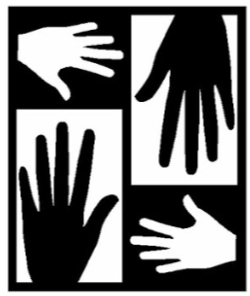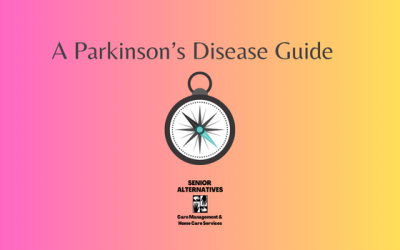April 8, 2024

Checxkat at – Parkinson’s disease is a complex neurodegenerative disorder that affects movement and can lead to a range of both motor and non-motor symptoms. Listed below are some of the ABC’s of Parkinson’s to help bring awareness and understanding of the disease that affects nearly one million Americans in the United States.
Anxiety: One of the less discussed but equally debilitating aspects of Parkinson’s is anxiety, which can significantly affect the quality of life for those diagnosed. This anxiety often stems from the unpredictability of symptoms and the progressive nature of the disease. In terms of physical manifestations, balance issues are common, leading to a higher risk of falls and the injuries associated with them.
Balance: This impairment is a hallmark of Parkinson’s disease, profoundly affecting mobility and the risk of falls. The condition’s progression leads to a decline in the automatic responses that typically stabilize us, making it challenging for individuals to maintain their center of gravity. Key factors contributing to balance issues include bradykinesia (slowness of movement), rigidity, and postural instability. These symptoms can diminish an individual’s ability to perform rapid, corrective actions necessary to prevent a fall, especially in response to unexpected changes in the environment or body position. Furthermore, the fear of falling can lead to a reduction in physical activity, which may further exacerbate the decline in overall mobility and quality of life for those with Parkinson’s.
Diagnosis: The best diagnoses for Parkinson’s typically come from neurologists specializing in movement disorders, as they can recognize the early signs and subtle symptoms of the disease.
Early Signs: Signs of Parkinson’s disease are often subtle and gradual, making them easy to overlook. Common early symptoms include a slight shaking or tremor in a finger, thumb, hand, or chin, often observed while the individual is at rest. Another early sign is the stiffening or slowing of movement, known as bradykinesia, which can affect any part of the body and may lead to a shuffling walk or reduced facial expressions. People may also notice a decrease in the automatic movements, such as blinking or swinging their arms while walking. Small handwriting, or micrographic changes, where letters become smaller and words more crowded together, is another early indicator. Additionally, changes in posture, balance, and speech, including speaking softly, quickly, slurring, or hesitating before talking, are potential early signs of Parkinson’s disease. Recognizing these symptoms promptly can be crucial for early diagnosis and treatment, potentially improving the quality of life for those affected.
Motor Functions: The disease’s progression leads to the gradual loss of motor control, manifesting initially as slight tremors in the extremities, notably the hands. Over time, individuals may experience rigidity in their muscles, making movements stiff and difficult. The coordination of movement becomes compromised, leading to a distinctive shuffling gait accompanied by a reduced ability to balance, increasing the risk of falls. Fine motor skills deteriorate, complicating tasks such as writing or buttoning a shirt, further diminishing independence. The progression of these symptoms varies significantly among individuals, but their impact on motor functions underscores the importance of seeking timely medical advice and intervention.
Stages: Parkinson’s disease progresses through five distinct stages, each representing a gradual increase in the severity of symptoms and impact on quality of life. In Stage 1, symptoms are mild and generally do not interfere with daily activities. They may be noticeable only on one side of the body and could include slight tremors or movement difficulties. By Stage 2, symptoms start affecting both sides of the body, though individuals can still live independently. Difficulties in posture, balance, and facial expressions become more apparent. Stage 3, often considered the midpoint of the disease, introduces significant impairment in motor skills and balance. While individuals remain independent, falls become more common, and activities such as dressing and eating may take longer to complete. Stage 4 marks a severe point in Parkinson’s progression. Individuals require substantial help with daily activities and are unable to live alone safely. The use of a walker may be necessary due to substantial difficulties with movement and balance. Finally, Stage 5 is the most advanced and incapacitating phase. Individuals often require round-the-clock assistance due to severe motor control loss. At this stage, legs may become so stiff that the individual is unable to walk, and they may be bedridden. Non-motor symptoms, such as cognitive decline, anxiety, depression, and hallucinations, may also intensify, complicating treatment and care efforts. Understanding these stages helps in planning for the progression of the disease, enabling patients and caregivers to make informed decisions about treatment and care.
Tremors: related to Parkinson’s are among the most recognizable symptoms of the disease. They are typically characterized by an involuntary, rhythmic shaking that occurs at rest, often starting in one hand and sometimes described as “pill-rolling” tremors due to the thumb and fingers moving in a circular motion. While these tremors are not debilitating, they can significantly interfere with daily activities and serve as an early warning sign of the disorder.
Vertigo: The sensation of spinning or dizziness, is not a direct symptom of Parkinson’s but can be related to it due to the disease’s impact on balance and spatial orientation. Issues with balance and gait in Parkinson’s patients can make them more prone to episodes of vertigo, primarily as a result of the diminished postural reflexes and the increased risk of falls associated with the disease.
Young-onset Parkinson’s: (YOPD) refers to Parkinson’s diagnosed in individuals under the age of 50. It accounts for a smaller percentage of cases and can present unique challenges, such as a longer disease duration and a slower progression rate compared to individuals diagnosed at an older age. Symptoms of YOPD may be similar to those of traditional Parkinson’s, but the impact on employment, family life, and long-term planning can significantly affect the quality of life and mental health of younger patients. Additionally, managing the disease can be more complex due to the long-term use of medications and the potential for dyskinesia—a condition characterized by involuntary, erratic, or writhing movements—as a side effect of long-term dopaminergic treatment.
Resources:
The Parkinson’s Foundation is a great resource and can be found online at www.parkinson’s.org or they can be reached by phone at (800)473-4636.
PD Active is a non-profit organization by and for people with Parkinson’s disease in Berkeley, Oakland, and the East Bay. It was founded by a small group of men and women with Parkinson’s a decade ago and has extended its work to a broader community by providing activities and programs to a growing population affected by PD. Check out https://pdactive.org
To schedule a free 45 minute consultation about elderly healthcare related issues, reach out to us @ 888.451.4290 – We are here to help you navigate the challenges of aging.
Related Articles
Why People in Blue Zones Thrive and Live Longer
Blue Zones are regions where people live longer, healthier lives compared to the global average. These areas have been studied extensively to find common denominators and answers about what makes these places unique. One of the key components of these lifestyles is community engagement, or having a strong sense of belonging and support from others. Read on to know more about Blue Zones and how we can duplicate their lifestyle and best practices.
Understanding Parkinson’s Disease
April is Parkinson’s disease awareness month, with that in mind we put together a blog
A guide to effectively enhance, remodel or retrofit homes and environments for older adults.
This week, we created a guide on how to accommodate a home or environment for older adults, especially people with memory loss which can be vital for their comfort and well-being. Whether the memory loss stems from conditions like Alzheimer’s or short-term impairments, retrofitting a home can significantly enhance safety, accessibility, and overall quality of life.





